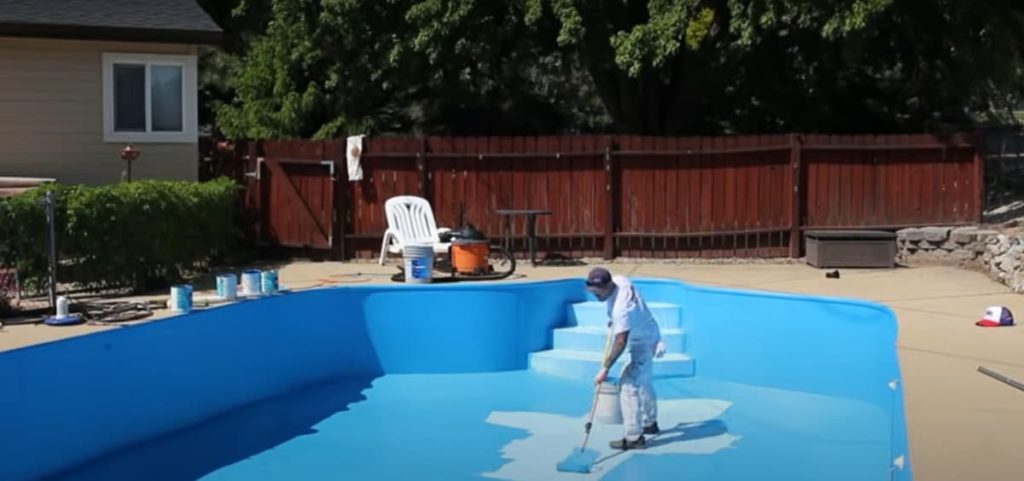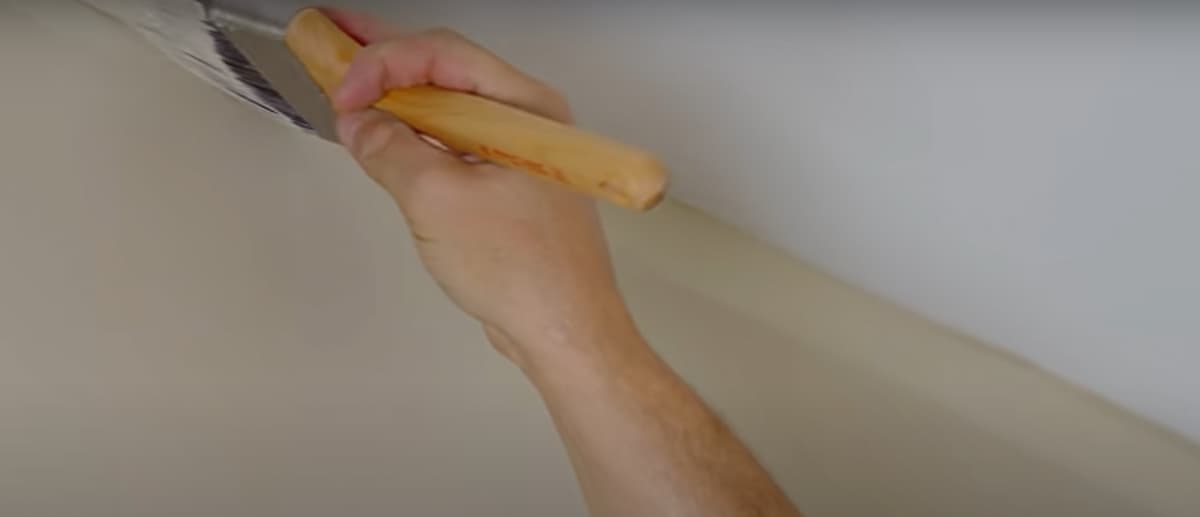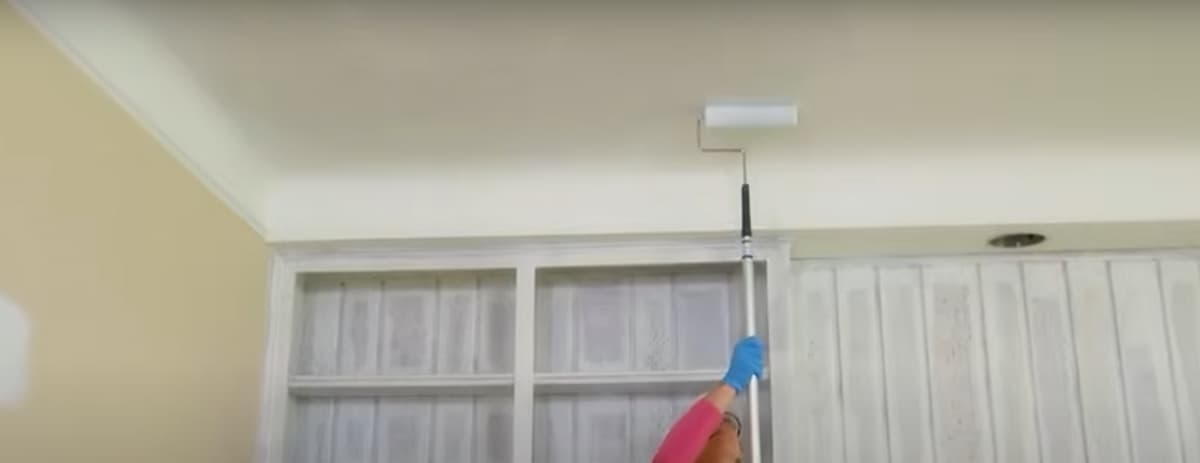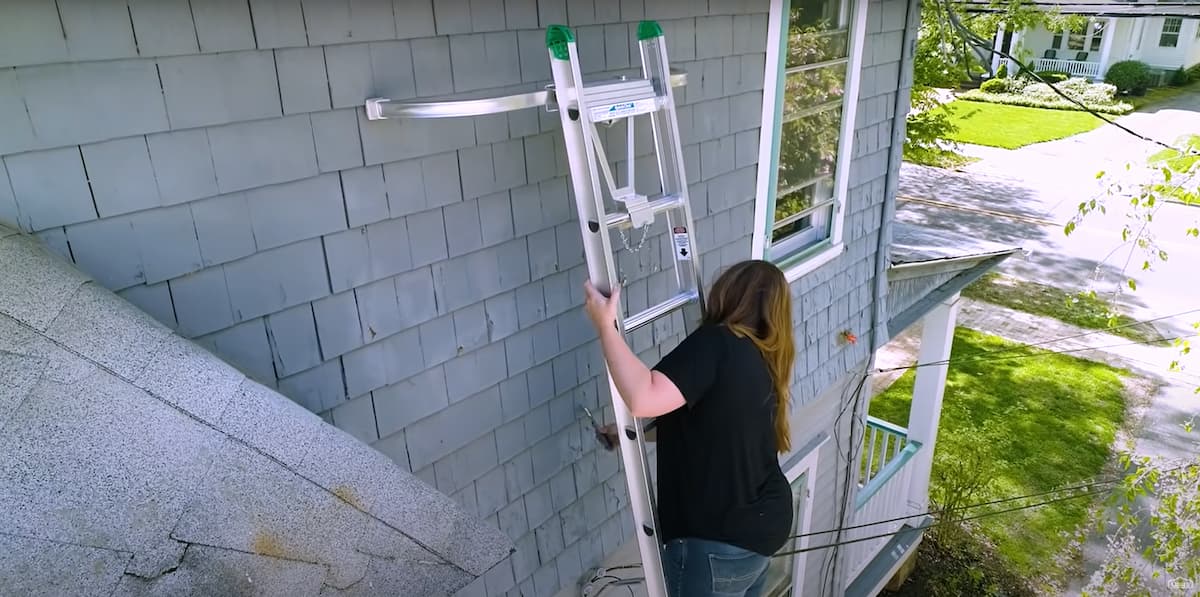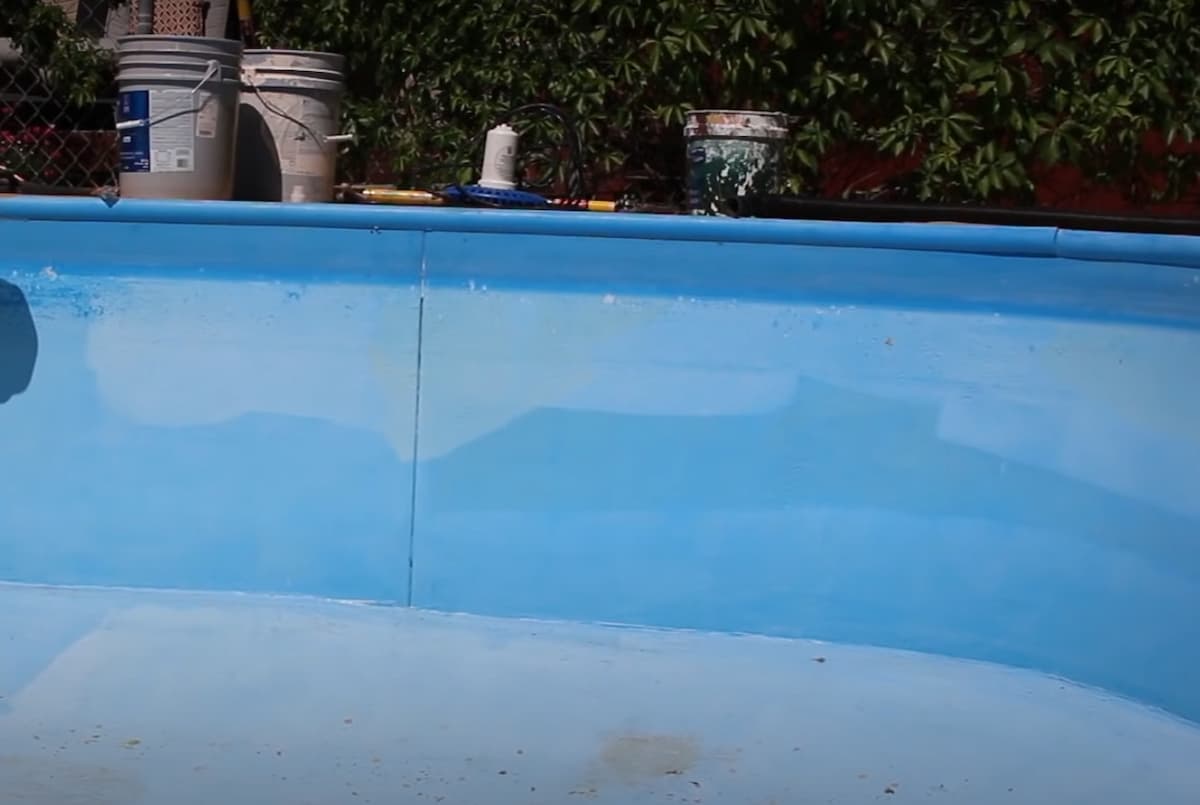
Swimming pools in Australia are either built from fibreglass or are made of a concrete base. Most Australians have either fibreglass or a concrete pool. There is nothing on earth that can stop our Australian sun from shining down on us for many months each year. We all love to go and soak up this sunshine by having a swim in the pool. A year-round supply of sunshine is something that we all enjoy here, which is one reason why swimming pools are so popular.
Swimming pools have been a big hit with Australians for well over 50 years now. In fact, every Australian home probably has a swimming pool on their property somewhere by now, be it fibreglass or concrete.
Paint prices are an important consideration in the upkeep of your swimming pool, for both maintenance costs and how your pool looks. As with most things nowadays, there is a certain amount of competition in the marketplace. This means that many companies selling these paints have reduced their prices to make them more attractive to buyers.
Some people may think that they may save money by painting their own swimming pool, but this is a dangerous move as you could end up spending a lot more on paint than if you used a professional company to do the job. If you still think you can paint your own swimming pool then be my guest, I won’t try and stop you from making such an amateur mistake.
The prices are mainly based on the pool structure. The larger the swimming pool, the more it may cost to paint. There are also a number of other factors that influence the final price you may pay for this service.
Pool Paint Price
In Australia, a professional company may charge as low as $3.50 per square metre for painting a concrete swimming pool and about $8.00 per square metre for fibreglass pools. This price covers the work involved in applying the paint, as well as using a high-quality marine enamel that is guaranteed not to fade for at least three years. The paint itself can cost a few hundred dollars but usually, you can expect to pay as low as a few thousand AUD. It depends on a lot of factors and each company may offer a different quote.
Pool Painting Cost
This price does not include power washing but usually, the company may wash your pool for an additional fee. The pool paint may only last as long as the surface is smooth and free from cracks. If you have a cracked swimming pool, it is likely that you may need to get this repaired before any paint job can be done.
The prices vary from region to region, as well as by individual companies. The best way to find a local company near your home is to use the internet and ask for quotes from a number of different companies in your area. Online you may be able to select the size of your pool, which helps greatly in providing an accurate quote from each company that replies back to you. Be sure to ask for references from previous customers and always get at least three quotes from different companies. This way, you may be able to make a completely informed decision when choosing a swimming pool painter within your area.
Another thing to take into consideration is the costs of repainting your pool in future years. Do not assume that repainting your pool may be cheap because it won’t. At a minimum, you could plan on spending about the same amount of money to get your pool repainted in future years as you have just spent painting the existing paint job. The reason for this is that any minor damage caused by falling leaves or other similar things may need to be repaired before any painting can be done. The more damage there is, the more it may cost to repair and the less likely you are to save money by doing it yourself in future years.
The costs involved in owning a swimming pool could not put you off from getting one because pools are an excellent investment for your home. You may however need to be aware of all the costs involved in owning a pool, including painting it periodically, and ensure that you have a healthy amount of money set aside for this task.
How Much does It Cost to Paint a Pool?
Painting your pool is not a DIY project. The price range for painting a pool is between $4.00 and $7.50 per square metre, including materials and labour costs. A painted pool requires recoating every three years.
Painting a large swimming pool can cost $3,000 to $10,000, but it all depends on the cost of paint and the size of your pool. You’ll need to buy primer and top paint that is recommended for high wear areas, such as decks and steps. These additional costs can add an extra $300 to $500 to your bill.
There are many factors that contribute to the total cost, including size, construction materials and surface preparation. Pools can be made of concrete, gunite, vinyl or fibreglass. The average pool is 7 x 15 meters in size with concrete being by far the most popular type of material used for backyard pools.
The cost of painting your pool may depend on the size and material of your pool, how much preparation work needs to be done before painting is possible, and whether you want to do it yourself or hire a professional to do the job for you.
Painting Fibreglass Pool
Painting a fibreglass pool is the same as painting any other type of pool, with one exception. These surfaces may be primed before the paint can be applied. A professional may still be the way to go if you have a fibreglass pool as it can be fairly difficult and dangerous work. It is recommended to use a sprayer and roller and protect yourself with proper equipment and clothing.
The cost of painting a fibreglass pool may depend on many factors such as the size, location, type of paint used, etc. These surfaces also require recoating every three years, unlike concrete pools where you can get away with not having to repaint for 8-10 years.
The cost of painting a fibreglass pool is the same as for any other type of pool, but be aware that you may have to pay extra for primer and top paint recommended for high wear areas.
Saltwater Pools
Saltwater pools are expensive to set up but require little maintenance. They do not need to be painted, except for the bottom which you could do every three years or so. There is an initial set-up cost and additional running costs because of other equipment that is required. Any costs for painting are the same as any other type of pool. A pool painter may suggest what would be the best choice for this type of pool painting.
Fibreglass Pool Paint
Painting a fibreglass pool can be quite tricky. Although you may try to paint it with the same materials as other types of pools, you may find that you have difficulty applying the paint evenly.
Fibreglass is smooth and hard to apply normal paints to which makes it very expensive if done professionally. In some areas, local laws prohibit homeowners from painting a fibreglass pool with the same materials used for other pools.
Fibreglass paint can be purchased in kits that vary in price depending on the size of your pool and whether you choose to do it yourself or hire a professional. The downside of this is that it may not last long (1-2 years) so you’ll be painting your pool fairly often which quickly negates the savings made by using non-professional paints in the first place. With this type of product, it is best to hire a professional to apply the paint.
As most fibreglass pools need recoating every three years, this product does not save you money in the long run as traditional paints for a swimming pool would. Fibreglass paint may give your pool a fresh new look, but it may be costly and time consuming with no long term benefits.
As with any other type of pool, the cost may depend on the size, construction materials and surface preparation. For a fibreglass pool, primer is essential. Fibreglass pools may be painted with high-quality paint to ensure durability that can last 4-5 years before needing recoating.
Concrete Pool Paint
Painting a concrete pool surface with the best quality paint for your pool, but can be difficult to apply. You may need someone experienced as the process is time-consuming and you may require an airless sprayer as well as stencils and stencil brushes to complete this job properly.
Since painting a concrete pool requires so much preparation, hiring a professional is the safest way to go. You can try doing it yourself, but this could lead to costly mistakes that would require even more work and expense to fix them.
Concrete paint is not difficult to apply like fibreglass pools, however, you may need lots of patience as it takes quite some time (5 days) for the paint to cure. The most popular type of pool paint for concrete pools are epoxy paint, but acrylic paint is also available.
A traditional painted surface may last 7-10 years.
The best way to cut down on your pool surface painting expenses is by repainting your fibreglass or concrete pool every three years. If your local pool store does not have the best prices, you can also check online for great prices on swimming pool paint. You may need to decide what type of paint is right for you and your budget based on your needs and location. For fibreglass pools, make sure you use a high-quality primer from a local pool store as well as the right paint for fibreglass pools.
Remember, cheaper is not always better when it comes to painting your pool. Be willing to pay more for quality paints that may last longer and keep your pool looking new.
Cement Pool Paint
Cement pool paint is not recommended for painting your cement pool. Instead, you may need to use epoxy paint or acrylic paint over the top of an existing (new) layer.
This is because cement paint is not designed to stick to the surface of a concrete pool and may need another type of paint on top. To apply cement paint evenly, you’ll also need someone experienced and using expensive equipment such as an airless sprayer and stencils.
As with painting concrete, it is best to hire a professional for applying cement paint or even choose another type of paint such as aluminium or fibreglass.
If you want the best results when painting your pool, which may save you time and money in the long run, use high-quality paints that stick well to the surface of both concrete and fibreglass pool. Get the best prices by buying your paint from a pool supply store or online.
Types of Paints for Pools
Painting your pool is an inexpensive way to resurface it and get a fresh new look, but you need to know which type of paint to use. There are several types of paints available, so the choice could be based on what surface material you have. The most famous is pool epoxy paint.
Above-ground pool paints are used for painting above-ground pools, while pool paints are used for in-ground pool surfaces. The most common types of pool paint include epoxy, acrylic and fibreglass. These different types of paint do not last the same amount of time and they each give your in-ground or above ground pool a different look:
Epoxy Pool Paint
A two-part epoxy pool paint coating that bonds well, is very hard and generally remains glossy indoors usually polished or high gloss. If you have an above ground pool, epoxy pool paint may make it look new again. However, epoxy pool paint is expensive and hard to apply as the surfaces may be very smooth and free of all oil and dirt before applying the paint. Pool epoxy paint lasts longer than any other type of paint for pools, but it is expensive.
Algae Pool Paint
Algae swimming pool paint works similarly to epoxy paint, except it is water-based so it does not emit fumes. Algae paint may reduce your pool maintenance by blocking algae growth, but it does not last as long as epoxy pool paint.
Acrylic
A more cost-effective option than epoxy that gives your pool a matte finish which is good if you want a less shiny surface, can be applied with rollers or sprayers on larger areas but hand brushing works best on intricate designs such as the sides of pools. Acrylic paints are often preferred for concrete pools as they resist mildew growth better than other types of paints. Acrylic pool paint usually lasts only 1 to 2 years and can be applied to any finished pool surface.
Fibreglass
Fibreglass pool paints come in two parts and contain a bonding agent to help them stick to the surface of your pool, also comes in a high-gloss finish which is good for pools that get lots of sun exposure. Fibreglass paint gives concrete, fibreglass or painted surfaces a shiny look and can be applied with sprayers on larger areas but hand brushing works best on intricate designs such as the sides of pools.
The type of paint you choose may be based on what you need and your budget. Remember, cheaper is not always better when it comes to painting your pool – invest in top quality paints for your area and climate conditions so they last longer.
Rubber Pool Paint
Rubber pool paint, also known as elastomeric paint, is very durable and can last up to 10 years. This type of paint forms a glue-like bond with the surface which makes it able to stretch and shrink depending on temperature changes in your swimming pool water.
The big advantage of rubber pool paint is that if you even get a small scratch, you can just rub some more paint over it and let it dry, you don’t have to worry about the scratches because they won’t rust. When this type of paint flakes off, you may need to scrub down your pool surface and apply new rubber pool paint before painting the rest of the pool.
Chlorinated Rubber Paint
The chlorinated rubber paint is a new type of rubber pool paint that resists the harsh effects of chlorine, comes in several colours and is easy to apply. If you are serious about maintaining your swimming pool, rubber paint may be the best option for your needs. To keep your in-ground or above ground pool looking new and in great condition, apply a fresh coat of chlorinated rubber paint every year. Pool painters can tell you more if your pool could benefit from this type of paint.
